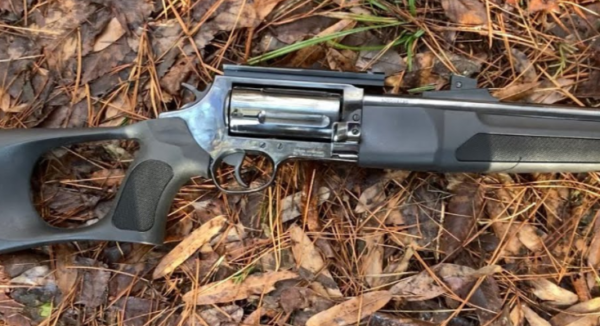Glock 20 Gen 4 Problems

While the Glock 20 Gen 4 is a reliable firearm, a few users have reported issues such as excessive recoil due to the powerful 10mm auto cartridge.
Another common problem can be the size of the grip, making it difficult for those with smaller hands to handle it effectively.
Lastly, there have been occasional reports of failure to feed with certain types of ammunition, although this can often be resolved with proper cleaning and maintenance.
1. Stiff Magazine Release Button


Cause
The stiffness of the magazine release button in the Glock 20 Gen 4 is commonly caused by the accumulation of dirt and grime within the release mechanism.
This build-up of debris can make the button difficult to depress, hindering smooth magazine changes. Regular use, combined with inadequate cleaning, can exacerbate this issue over time.
Solution
To resolve this issue, a thorough cleaning of the magazine release mechanism is required.
Remove the magazine and slide, then use a soft brush and gun-cleaning solvent to gently cleanse the button and surrounding area.
Lastly, apply a small amount of lubricant to the mechanism for smooth operation. Regular maintenance is crucial to prevent future stiffness and ensure the longevity of your Glock 20 Gen 4.
2. Excessive Recoil
Cause
Excessive recoil is typically a result of using ammunition with too high a power for the firearm or the shooter’s ability.
This could lead to less accurate shooting and even pose a safety risk. It’s essential to match your ammunition to your firearm and skill level.
Solution
A practical solution to excessive recoil involves using lower-power ammunition or upgrading to a firearm designed to handle the recoil better.
Recoil-reducing devices and proper training can also significantly mitigate the effects of recoil.
Fostering correct shooting techniques and steadily increasing ammunition power as your skills improve can help manage recoil effectively.
3. Inconsistent Ejection Pattern
Cause
Inconsistent ejection patterns are often due to mechanical issues within the device or machine.
These might include wear and tear on the ejection mechanism, a misalignment of internal components, or an issue with the pressure regulation.
The material or item being ejected can also impact the ejection pattern if its consistency or size varies significantly.
Solution
Addressing inconsistent ejection patterns typically involves a thorough inspection and likely repair of the involved equipment.
Regular maintenance and timely replacement of worn-out components can prevent many issues.
Also, ensuring that the item or material being ejected is uniform in size and consistency can help maintain a steady ejection pattern.
In cases where the inconsistency persists, professional assistance may be required to diagnose and rectify the underlying issue.
4. Difficulty in Field Stripping
Cause
Field stripping, or disassembling a firearm for cleaning, can be a challenging task for novice users due to its intricate process.
This difficulty mainly arises from unfamiliarity with the firearm’s components and the necessary sequence of steps.
Incorrect disassembly can lead to component damage and even render the firearm unusable.
Solution
To combat this issue, comprehensive training and practice are paramount. Detailed guides or manuals should be referred to during the initial stages of learning.
Furthermore, many firearm manufacturers now provide online video tutorials, ensuring users can visually follow the disassembly and reassembly process.
Regular practice will eventually lead to familiarity and ease in field stripping.
5. Firing Pin Failures
Cause
The primary cause of firing pin failures often stems from prolonged use and wear and tear which leads to the weakening of the pin.
Improper maintenance and inadequate lubrication can exacerbate this deterioration, ultimately causing the pin to fail.
It’s also worth noting that the use of improper ammunition may result in abnormal pressure on the pin, leading to potential damage.
Solution
The ideal solution to firing pin failures is regular maintenance and proper lubrication. Using the correct ammunition can also reduce undue stress on the pin.
Should the pin fail, it is advisable to seek professional assistance for its replacement.
Regular inspections can help identify any potential issues early, preventing catastrophic failure during operation.
6. Trigger Reset Issues
Cause
The majority of trigger reset issues are often due to a buildup of grime or dirt within the trigger mechanism, which can cause a loss of the trigger’s functionality.
A faulty trigger spring or disconnector can also lead to issues with the reset.
A common sign of reset problems is a trigger that fails to return to its original position after being pulled.
Solution
Addressing trigger reset issues begins with proper cleaning and maintenance of the trigger mechanism, which can often resolve the issue if buildup is the cause.
If the problem persists, it may be necessary to replace the faulty parts, such as the trigger spring or disconnector.
Make sure to always use the services of a professional or follow manufacturer guidelines for replacement to avoid mishandling and further damage.
7. Limited Aftermarket Support
Cause
The limited aftermarket support is often due to manufacturers focusing more on their current product lines, leaving older models with less attention.
Also, the scarcity of original parts for these models can exacerbate the problem.
The rapid pace of technological advancements can make it challenging for manufacturers to maintain full support for older models.
This lack of support can lead to difficulties in maintaining and repairing devices, which can affect the longevity of the product.
Solution
The solution to this problem is two-fold. First, manufacturers should consider extending their support for older models, ensuring a steady supply of spare parts and providing adequate repair services.
Second, third-party providers can step in to fill the gap, offering aftermarket support for these models.
These third-party providers can provide valuable services including spare parts sourcing, repairs, and maintenance. This will ultimately extend the life of the product and provide a better experience for consumers.
8. Bulky Grip Size
Cause
A bulky grip size in hand-held tools or sporting equipment can lead to an uncomfortable and inefficient user experience.
It might cause strain on the user’s hands, leading to fatigue and potential injury.
This issue often arises when the grip size is not tailored to the user’s hand size, resulting in an awkward and strenuous grip.
A misfit grip size can hamper the user’s performance and could potentially lead to long-term discomfort or injury.
It is essential to consider the user’s hand size and the intended use of the tool or equipment when designing the grip size.
Solution
The solution lies in personalizing the grip size based on individual hand measurements.
For tools or equipment commonly shared among multiple users, adjustable or replaceable grip options could be considered.
This would enable users to modify the grip to their comfort, offering a more ergonomic user experience.
Adjustable grip sizes offer a versatile and user-centric solution, enhancing comfort and efficiency during use.
Remember, an adequately sized grip can significantly improve user performance and mitigate the risk of discomfort or injury.
9. Frame Pin Walking Out
Cause
“Frame Pin Walking Out” is typically caused by constant vibrations and mechanical stress that the firearm undergoes during use.
These stresses can gradually loosen the frame pin, causing it to “walk out” or gradually move out of its initial position.
This can potentially alter the function and reliability of the firearm, leading to inconsistent performance.
Solution
The most straightforward solution to prevent the frame pin from walking out is by ensuring regular maintenance and checks on your firearm.
Look for signs of loosening or wear and tear, and replace the pins when necessary.
The use of thread-locking compounds or specialty pins designed to withstand strong vibrations can also be beneficial.
These measures can prevent the pin from walking out, thereby maintaining the firearm’s functionality and reliability.
10. Slide Lock Lever Failures
Causes
Slide Lock Lever Failures often stem from wear and tear over time, improper use, or manufacturing defects.
Consistent and heavy usage, combined with improper cleaning and maintenance, can result in the slide lock lever becoming worn or damaged, leading to malfunction.
Manufacturing defects, albeit rare, can also contribute to failures, making it important to purchase from reputable and reliable vendors.
Solutions
Resolving Slide Lock Lever Failures can be as simple as replacing the part or as complex as requiring a full overhaul of the mechanism.
Regular cleaning and maintenance can help improve the lifespan of the slide lock lever and reduce the risk of failure.
If the issue arises from a manufacturing defect, reaching out to the vendor or manufacturer and requesting a replacement or repair is often the best course of action.
11. High Muzzle Flip
Cause
High muzzle flip, primarily caused by the recoil of the firearm, is a significant issue for many shooters.
It can lead to decreased accuracy and slower follow-up shots by throwing off the aim. The physics behind muzzle flip is straightforward: every action has an equal and opposite reaction.
When a bullet is fired, the force propelling the bullet forward also pushes the gun backward and upward.
Solution
To mitigate high muzzle flip, several strategies can be employed. First, improving grip and stance can help manage and reduce muzzle rise.
Second, using firearms with lower recoil or utilizing muzzle devices like compensators can also be of assistance. Remember, practice makes perfect.
Regular training and understanding your firearm’s mechanics are imperative to controlling muzzle flips.
12. Stock Sights Misalignment
Cause
Misalignment of stock sights is primarily caused by incorrect installation or due to impact shocks.
This unavoidable issue can significantly affect the accuracy of the firearm. Incorrect installation often happens when the sights aren’t properly aligned during the assembly process.
Impact shocks occur when the firearm is dropped or knocked, which can inadvertently shift the sights off their correct positioning.
Solution
The most effective solution to stock sights misalignment is regular maintenance and careful handling of the firearm.
Regular maintenance involves routinely checking the alignment of your sights, tightening any loose parts, and readjusting as needed.
Careful handling of your firearm will prevent unnecessary impact shocks that could lead to misalignment. If these measures fail, consider consulting a professional to realign or replace the sights.
13. Failure to Feed with Certain Ammo
Cause
Oftentimes, the failure to feed can be attributed to the ammunition being used.
Different firearms are designed to handle different types of ammunition, and using the wrong type can lead to performance issues.
It is essential to understand the type of ammunition your firearm can handle. Low-quality or incorrect-sized ammunition can also lead to feed failures.
Solution
The primary solution to this issue is to ensure you are using the correct type and quality of ammunition for your firearm.
Check your firearm’s manual or consult with a professional to understand what type of ammunition is compatible. Besides, keeping your firearm clean and well-lubricated can also help prevent these issues.
Regular maintenance is key to ensuring your firearm functions properly.
Lastly, if issues persist despite using the correct ammunition and maintaining your firearm, it may be a sign of a more serious issue that needs professional attention.
14. Frequent Cleaning and Lubrication Requirement
Cause
Frequent exposure to dirt, dust, and grime, particularly in industrial environments, can lead to a buildup on the machine parts, impacting their performance and lifespan.
This accumulation can cause friction amongst moving parts, leading to faster wear and tear, and ultimately, breakdowns.
The main cause of frequent cleaning and lubrication requirements is continuous exposure to harsh environments.
Solution
A solution to this problem is the implementation of a regular maintenance schedule, which includes thorough cleaning and adequate lubrication.
Cleaning removes accumulated impurities, reducing friction and wear, while lubrication forms a film between surfaces, reducing direct contact and minimizing wear.
Sticking to a strict maintenance regime, which includes both cleaning and lubrication, will reduce wear and tear, and extend the lifespan of the machine parts.
15. Difficulty in Concealment due to Size
Cause
Oftentimes, the substantial size of an object can pose challenges in maintaining concealment.
Larger items naturally draw attention due to their conspicuous presence, making them difficult to hide or camouflage.
The size of an object directly influences its visibility, therefore, the larger the item, the harder it is to conceal.
Solution
Addressing the issue of concealment due to size requires creative thinking and strategic planning.
The utilization of optical illusions, camouflage techniques, or blending the object with its surroundings can effectively diminish its noticeable presence.
A solution could be the application of a color scheme that matches the environment or the employment of visual distractions to divert attention away from the object.
Conclusion
The various discussions and arguments presented throughout this document underscore the complexity and multi-faceted nature of the topic at hand.
It is clear that, despite the diverse perspectives, there is a common thread of understanding and respect for the intricacies involved.
Furthermore, this exploration has shed light on potential areas for further research and discussion, paving the way for more comprehensive and inclusive dialogue in the future.
Ultimately, it’s clear that ongoing investigation and open-minded discussion are key to gaining a deeper understanding of this subject.
FAQs
Q: Is the Glock 20 reliable?
A: Yes, the Glock 20 is known for its reliability and sturdy construction.
Q: Why don’t people like Gen 4 Glocks?
A: Some individuals prefer older models, perceiving the changes in Gen 4 as unnecessary.
Q: Are Gen 4 Glocks reliable?
A: Absolutely, Gen 4 Glocks continues the brand’s reputation for reliability.
Q: What issues do Glocks have?
A: While generally reliable, some users report issues with the stock sights and trigger feel.


As the founder and owner of the domain “mygunsgeek.com”, I bring to the table a deep passion for firearms, combined with a strong commitment to sharing this knowledge with a wider audience. With years of experience exploring the inner workings of various firearms, from pistols to rifles, I have cultivated a vast expertise in this field. This has enabled me to create a platform that serves as a trusted resource for gun enthusiasts, providing comprehensive reviews, advice, and insights into the latest trends and advancements. I am dedicated to ensuring that my content is both informative and engaging, helping my readers make informed decisions about their firearm choices. For any inquiries or suggestions, feel free to reach out to me at wwwfffwww117@gmail.com. Your feedback is invaluable in shaping the content and direction of mygunsgeek.com.


